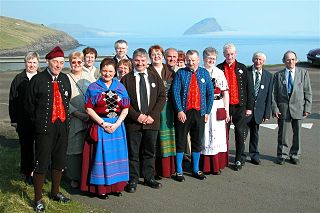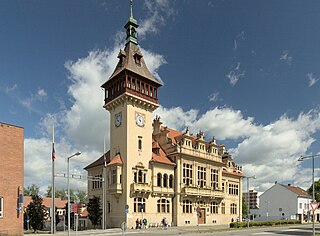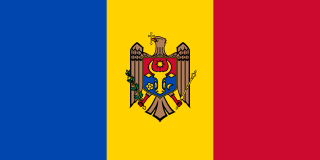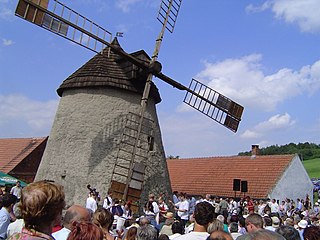Costume is the distinctive style of dress or cosmetic of an individual or group that reflects class, gender, profession, ethnicity, nationality, activity or epoch. In short costume is a cultural visual of the people.

A folk costume expresses an identity through clothing or costume, which is usually associated with a geographic area or a period of time in history. It can also indicate social, marital or religious status. If the costume is used to represent the culture or identity of a specific ethnic group, it is usually known as ethnic costume. Such costumes often come in two forms: one for everyday occasions, the other for traditional festivals and formal wear. The word "costume" in this context is sometimes considered pejorative due to the multiple senses of the word, and in such cases "regalia" can be substituted without offense.

A kaftan or caftan is a variant of the robe or tunic. Originating in Asia, it has been worn by a number of cultures around the world for thousands of years. In Russian usage, kaftan instead refers to a style of men's long suit with tight sleeves.

Bunad is a Norwegian umbrella term. In a broader sense, the term encompasses household, householding equipment, and livestock as well as both traditional rural clothes and modern 20th-century folk costumes. In its narrowest sense, the word bunad refers only to clothes designed in the early 20th century that are loosely based on traditional costumes.

Tracht refers to traditional garments in German-speaking countries and regions. Although the word is most often associated with Bavarian, Austrian, South Tyrolian and Trentino garments, including lederhosen and dirndls, many other German-speaking peoples have them, as did the former Danube Swabian populations of Central Europe.

The hanbok is a traditional clothing of the Korean people. The term hanbok is primarily used by South Koreans; North Koreans refer to the clothes as chosŏn-ot (조선옷).

A dirndl is a feminine dress which originated in German-speaking areas of the Alps. It is traditionally worn by women and girls in Austria, Bavaria, Liechtenstein, Switzerland and Alpine regions of Italy. A dirndl consists of a close-fitting bodice featuring a low neckline, a blouse worn under the bodice, a wide high-waisted skirt and an apron.

A sarafan is a long, trapezoidal Russian jumper dress worn by girls and women and forming part of Russian traditional folk costume.

Serbian traditional clothing, also called as Serbian national costume or Serbian dress, refers to the traditional clothing worn by Serbs living in Serbia, Croatia, Bosnia and Herzegovina, Montenegro, and the extended Serbian diaspora communities in Austria, Australia, Bulgaria, Canada, France, Germany, Greece, Hungary, North Macedonia, Romania, Russia, Slovenia, United States, etc. Like any traditional dress of a nation or culture, it has been lost to the advent of urbanization, industrialization, and the growing market of international clothing trends. The wide range of regional folk costumes show influence from historical Austrian, Hungarian, German, Italian, and Ottoman Turkish presence. Nonetheless, the costumes are still a pinnacle part of Serbian folk culture. From the 19th century and onwards, Serbs have adopted western-styled clothing. This change has started in larger settlements such as cities and towns, although it was not uncommon to see rural women in traditional working costumes all the way until the end of President Josip Broz Tito's term. Today, these national costumes are only worn by some elderly in rural areas but are most often worn with connection to special events and celebrations, mostly at ethnic festivals, religious and national holidays, weddings, tourist attractions, and by dancing groups who dance the traditional Serbian kolo, or circle dance.

Moravian Slovakia, also called Slovácko is a cultural region in the southeastern part of the Czech Republic, Moravia on the border with Slovakia and Austria, known for its characteristic folklore, music, wine, costumes and traditions. The area forms part of both the Zlín and South Moravian administrative regions.

Napajedla is a town in the Zlín Region of the Czech Republic. It has about 7,200 inhabitants. The historic town centre is well preserved and is protected by law as an urban monument zone.
Western dress codes are a set of dress codes detailing what clothes are worn for what occasion. Conversely, since most cultures have intuitively applied some level equivalent to the more formal Western dress code traditions, these dress codes are simply a versatile framework, open to amalgamation of international and local customs. This versatility has made this scale of formality a practical international formality scale.

The Armenian Taraz, also known as Armenian traditional clothing, reflects a rich cultural tradition. Wool and fur were utilized by the Armenians along with the cotton that was grown in the fertile valleys. During the Urartian period, silk imported from China was used by royalty. Later, the Armenians cultivated silkworms and produced their own silk.

Romanian dress refers to the traditional clothing worn by Romanians, who live primarily in Romania and Moldova, with smaller communities in Ukraine and Serbia. Today, the vast majority of Romanians wear modern-style dress on most occasions, and the garments described here largely fell out of use during the 20th century. However, they can still be seen in more remote areas, on special occasions, and at ethnographic and folk events. Each historical region has its own specific variety of costumes.

Icelandic national costume, collectively known in Icelandic as Þjóðbúningurinn has enjoyed various levels of popularity since the term was coined in Iceland in the 19th century, during the struggle for independence. Since 2001 the national costume is regulated by Þjóðbúningaráð, which preserves the correct techniques of making them and instructs people.

The Welsh traditional costume was worn by rural women in Wales. It was identified as being different from that worn by the rural women of England by many of the English visitors who toured Wales during the late 18th and early 19th centuries. It is very likely that what they wore was a survival of a pan-European costume worn by working rural women. This included a version of the gown, originally worn by the gentry in the 17th and 18th centuries, an item of clothing that survived in Wales for longer than elsewhere in Britain. The unique Welsh hat, which first made its appearance in the 1830s, was used as an icon of Wales from the 1840s.

Horňácko is an ethnographic microregion situated in the Hodonín District, South Eastern Moravia, Czech Republic. The region is home to approximately 10,000 people. It is significant for its traditional folk culture, especially the folk music. The region hosts annually the Horňácko Folk Festival.

Czech traditional clothing expresses Czech history relative to Czech culture and behaviour. Czech folk clothing may be divided into two groups: the Western style in Bohemia and mid-Moravia, and the Eastern style in Moravia and Silesia. In both regions, clothes were made from wool and homespun linen. During summer, Czechs wore lightweight fabrics such as silk. Women’s traditional clothing consisted of two aprons, tied in the front and back, and a white blouse. For men, a typical outfit included long breeches and a loose jacket.

Czech folklore is the folk tradition which has developed among the Czech people over a number of centuries. Czech folklore was influenced by a mix of Christian and pagan customs. Nowadays it is preserved and kept alive by various folklore ensembles uniting members of all ages, from children to seniors, showing their talent during competitions, folklore festivals or other performances.

The Ride of the Kings is a festival that is celebrated in Spring, at the Pentecost, in Moravia, the south-east of the Czech Republic. In 2011, it was added to the UNESCO Representative List of Masterpieces of the Oral and Intangible Heritage of Humanity.























